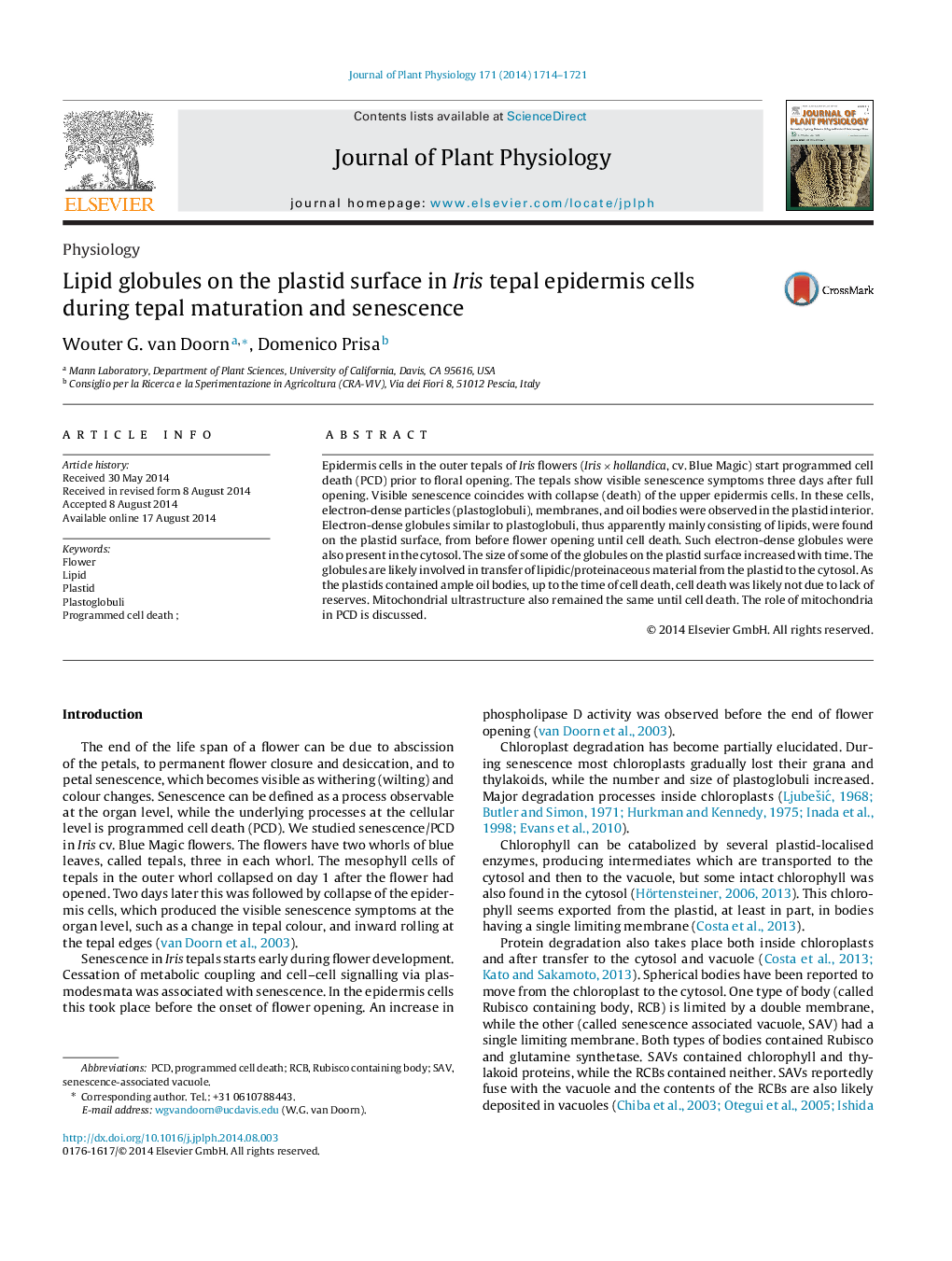| Article ID | Journal | Published Year | Pages | File Type |
|---|---|---|---|---|
| 2055824 | Journal of Plant Physiology | 2014 | 8 Pages |
Epidermis cells in the outer tepals of Iris flowers (Iris × hollandica, cv. Blue Magic) start programmed cell death (PCD) prior to floral opening. The tepals show visible senescence symptoms three days after full opening. Visible senescence coincides with collapse (death) of the upper epidermis cells. In these cells, electron-dense particles (plastoglobuli), membranes, and oil bodies were observed in the plastid interior. Electron-dense globules similar to plastoglobuli, thus apparently mainly consisting of lipids, were found on the plastid surface, from before flower opening until cell death. Such electron-dense globules were also present in the cytosol. The size of some of the globules on the plastid surface increased with time. The globules are likely involved in transfer of lipidic/proteinaceous material from the plastid to the cytosol. As the plastids contained ample oil bodies, up to the time of cell death, cell death was likely not due to lack of reserves. Mitochondrial ultrastructure also remained the same until cell death. The role of mitochondria in PCD is discussed.
